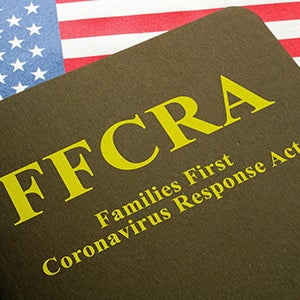DOL Releases Revised FFCRA Regulations Effective Immediately
Friday September 18th, 2020
Estimated time to read: 1 minute

The Families First Coronavirus Response Act (FFCRA) initially enacted by legislation earlier this spring was recently faced with a recent New York supreme court injunction. Effective immediately, the federal Department of Labor has issued revised regulations highlighted below.
Definition of Health Care Provider
The definition of health care provider for purposes of whom an employer can deny leave to is revised to include physicians and others who make medical diagnoses (the same as under traditional FMLA). This definition is narrower than in the previous rule to provide more parameters on who within the healthcare industry are qualified to make a medical diagnosis, leaving less room for interpretation.
Documentation Prior to Leave
Employers may not require that employees provide documentation to support their need for leave prior to taking it. It must be provided as soon as practicable. The former rule said that employers could require documentation before the leave started.
Leave During a Furlough or Business Closure
Emergency Paid Sick Leave (EPSL) and Emergency FMLA (EFMLA) are still available only if an employer has work available during the time that the employee needs leave. There is no change to this ruling; the DOL simply provided rationale.
Approval for Intermittent Leave for Childcare
Employees still must get approval from their employer to use intermittent leave. However, the DOL has made it clear that leave is not considered intermittent if a school or daycare is closed on certain days or half days.
There is no change to this ruling; the DOL similar gave rationale.
Let Us Help You Navigate the Complexities!
Have questions on the changes in COVID legislation or need ongoing HR assistance? Take advantage of our People Services live phone and email support solution! Visit HR Services for more information to further ensure you’re taking care of your most important asset—your people!
